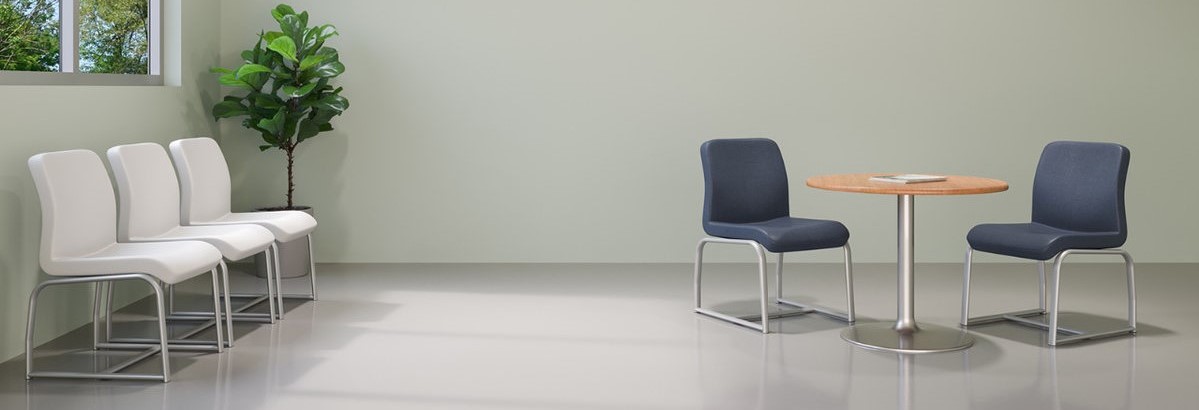Designers of Behavioral Health/Mental Health treatment spaces are constantly faced with balancing decor with function. There is a definite and clear psychological benefit to carefully selected colours, design elements and lighting in these spaces that create calming and positive environments.
While it is essential to create spaces that promote positive stimulation, it is often more challenging to ensure that your space is safe for both the patient and the staff.

Initial Considerations
In the initial stages of designing these spaces, a clear discussion around the required safety level is imperative. The discussion should be about the “worst-case scenario” rather than the “typical case,” as studies from Harvard Health Publishing1 found most individuals with psychiatric disorders are not violent. There is a subset of people with contributing factors such as substance abuse and other social factors that make safety planning in these spaces critical. For these spaces, it is the exception that sets the bar for patient and staff safety rather than the typical.
We can all agree that if death or serious injury should occur once in 5 years, that is too often! A mental health provider may go years without incident, and then out of nowhere, they are either assaulted or faced with the gruesome reality of patients that self-harm. Nurse Lynne Truxillo’s case is an example of just how fast it can escalate, as reported in April 2019 by nurse.org2.
Designing space for these areas does not have to be mutually exclusive to design or function. There is a dedicated effort in the furniture manufacturing industry to provide safer products that don’t detract from the design elements and cover many risk factors to consider.
Solutions
-
Ligature risks are the first consideration. This term simply means that there are no design elements that could be used for strangulation or cutting off circulation. Materials that can be refashioned to create a ligature and a product’s ability to hang or pinch materials are risks to be mitigated.
-
Products that have sharp components or design elements can be used for self-harm and unintentional self-harm in the event of some form of an outburst. Rounded edges, shatter-resistant materials, tamper-proof hardware, hidden fasteners and one-piece designs are essential to remove the risks associated with sharps in a safe environment.
-
Weighted or bolt-to-floor options are highly recommended features to avoid furniture from being used as weapons, battering or blockading. Additionally, it means that the furniture is not moved to new locations or misplaced.
-
Concealment of contraband is another consideration to take seriously when dealing with addiction or violent individuals. Narcotics and alcohol are known to increase the risk of violence, and the room mustn’t have hiding places.
Stat Medical Inc has a large selection of purpose-built furniture for Canada’s mental health and addictions facilities.
1 https://www.health.harvard.edu/newsletter_article/mental-illness-and-violence
2 https://nurse.org/articles/nurse-attacked-by-patient-dies-manslaughter/